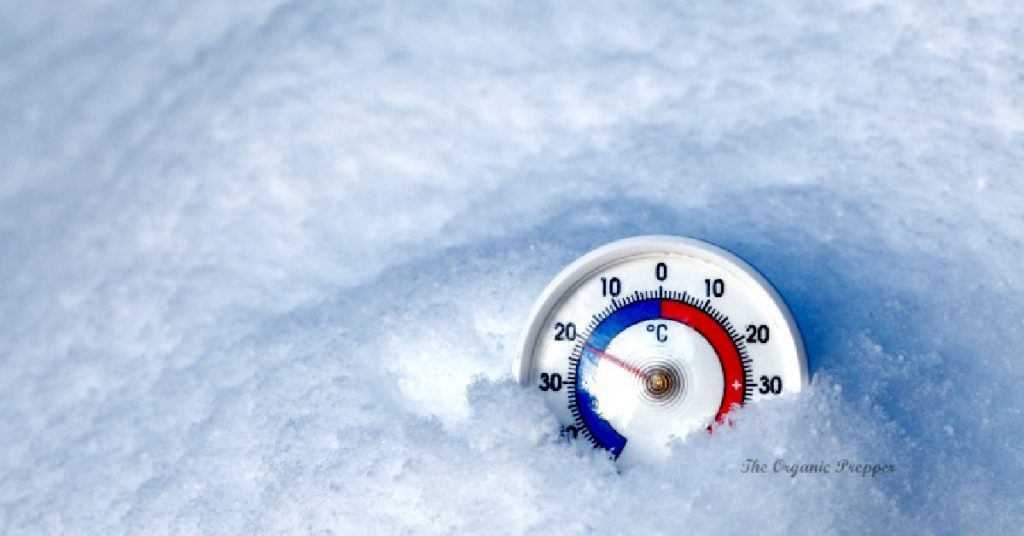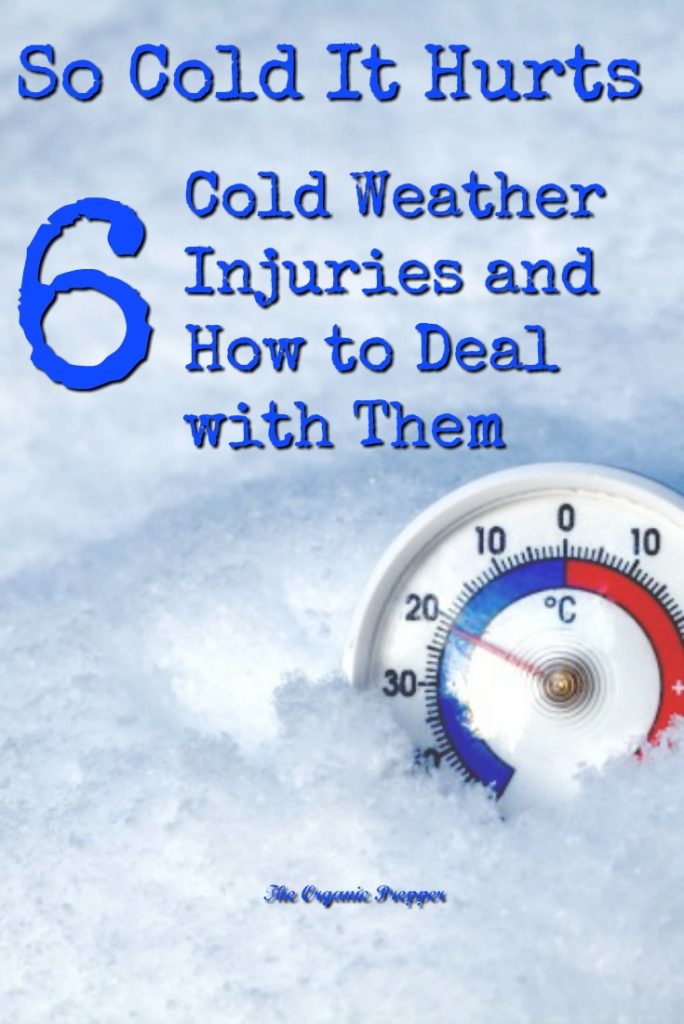If you're new here, you may want to subscribe to my RSS feed. Thanks for visiting!
It has been just over a week since Snowmageddon hit the east coast. The northeast was struck especially hard. We had a “bomb cyclone” snow storm followed by blistering cold from a “polar vortex”. Temperatures were hovering in the single digits. The wind chill brought us well below zero for days. The time was ripe for cold weather injuries.
Plus, there were half-frozen waves flooding downtown Boston and surrounding towns. There was tons of property damage, and people trapped in their vehicles. Luckily, there were no major injuries from the flooding.
Winter brings its own special set of common injuries. Here are some tips on preventing a cold-related injury in the first place. Here is what you need to know to recognize, prevent, and treat a serious, cold-related injury.
Cold Weather Injuries
Think of exposure to cold in a similar way as to exposure to the sun. You can only take so much until eventually, the skin will burn (think freezer burn) and blister.
There are a number of common injuries that emergency rooms see each year when the temperature drops. These include:
- Chilblains
- Trench foot
- Frostnip
- Frostbite
- Hypothermia
- Heart attacks
These can be broken down into three types: non-frozen injuries, frozen injuries, and cardiovascular injuries.
Non-Frozen Injuries
Two common cold weather injuries are chilblains and trench foot. Both occur in cold, wet conditions and affect the extremities. Because moisture can wick away heat from the body, you can end up with chilblains or trench foot even in 60°F weather.
Chilblains
You come in from the cold and wet, knowing that you need to warm up. You wrap up in blankets, snuggle up to a wood stove or heater, and you start to feel better. Next thing you know, you have blisters forming on your extremities. This is chilblains.
Chilblains are the result of capillary injury in the toes, feet, earlobes, etc. Signs of this injury normally show up after the affected tissue has been rewarmed, even several hours afterward.
Thankfully, chilblains generally resolves itself at home without further interventions in about two weeks or less. Do not “pop” the blisters. Blisters are like a sterile bandage. As long as it is intact, there is no risk of infection.
Keep an eye on any open blisters and sores that may start to show signs of infection. If you notice signs of infection, such as redness, swelling, or pain, it’s time to see your doctor. In a down-grid situation, you could use herbs with antibiotic properties.
My personal preference is for Oregon grape root powder, echinacea powder, yarrow powder, and marshmallow powder in equal portions mixed with honey to make a paste. This would be applied to the wound, wrapped in gauze, and changed 3-4 times a day.
Trench Foot
Trench foot, as its name implies, affects the foot. While the symptoms are largely similar, trench foot is restricted to the foot, whereas chilblains can appear elsewhere. Trench foot can be more serious than chilblains and can develop into gangrene.
Symptoms, including discoloration (redness, blotchy appearance, paleness, and progressing to blue/black), itchiness, numbness, swelling, and blisters. Sometimes, the blisters can lead to open sores, which could lead to an infection.
Normally, trench foot should be seen by a medical doctor. If, however, this is a true SHTF scenario and there is no higher form of health care available, the buck stops with you. If you find yourself in this situation, keep the following in mind:
- Get the affected foot clean, dry, and warm as soon as possible.
- Rewarming can be done with warm water, preferably from 104°F to 106°F.
- Be careful not to use water that is too hot. The skin’s sensation will be decreased, and the injured person may not be able to tell if the water is too hot or not.
- Make sure to dry thoroughly when removing the foot from the water and keep warm.
- Wrap the feet with breathable gauze to let any foot sweat evaporate.
- Elevate the foot to reduce swelling.
- Apply a salve made with warming herbs, like ginger and cayenne pepper to the feet to draw more circulation to the affected areas.
- Be aware that the renewed increase of circulation may cause some pain.
- Check the feet frequently for any signs of gangrene.
Frozen Injuries
Tissue freezes from the outside and works deeper into the tissue. There are two stages known as frostnip and frostbite.
Frostnip vs Frostbite
In the initial stage known as frostnip, the outer layers of tissue are frozen, and ill move over the soft, unfrozen tissue underneath.
Frostbite is when the tissue is frozen straight through.
Symptoms will be somewhat similar to chilblains and trench foot. Skin may turn red and blotchy with frostnip, then progressing to pale or grey with a waxy appearance, as well as numbness. If the tissue was completely frozen, the skin may begin to blister and/or turn black 2-4 days after thawing. A person with frostbite will become awkward and clumsy moving a body part with frostnip or frost bite.
Frostnip normally does not require special medical attention. The affected area is treated much the same as trench foot. Frostbite, however, is serious and requires medical treatment.
However, if no help is on the way, you need to know what you can do to minimize damage and risk of gangrene.
- Follow instructions for treating trench foot.
- Do NOT rub the frozen area to warm it up. You could break the body part right off.
- Do not defrost the tissue if there is a chance it could freeze again. The damage will be much worse.
- Be on the lookout for signs of hypothermia and gangrene.
- Consider adding more than only cayenne to help promote circulation. Other options would be a tincture combining cayenne, hawthorn, mistletoe, and ginger.
Hypothermia
While chilblains, trench foot, and frostbite are focused on the extremities, hypothermia is all about the core. Hypothermia is defined as body temperature dropping to 95°F. That’s just 3.6 degrees lower than normal body temperature.
Hypothermia is a medical emergency. It can result in shock, cardiac arrest, and coma, and it doesn’t take long to happen. What complicates matters is that hypothermia victims often do not recognize they are in distress because symptoms come on gradually. Often, children and outdoor enthusiasts may be enjoying themselves too much to notice their distress.
Signs of Hypothermia
Because hypothermia sets in gradually, you must be vigilant whenever you are out in the elements. Signals of hypothermia include:
- Shivering (the body’s attempt to stay warm)
- Lack of coordination
- Slurred speech
- Decreased respiration, heart rate, and blood pressure
- Impaired cognitive abilities
- Paradoxical undressing
- Drowsiness
- Terminal burrowing
Those most at risk are the elderly, children, those with medical conditions that inhibit the body’s ability to regulate temperature (hypothyroidism, diabetes, spinal injuries, burns, Parkinson’s, etc), people with mental illnesses (dementia, Alzheimer’s), as well as those who smoke and consume alcohol frequently.
If you have access to medical care, do not take risks with hypothermia. Get to a hospital.
If the medical system has collapsed, or if hospitals are at surge capacity due to some disaster, and all other forms of higher care are cut off, here are some things to keep in mind:
- Remove yourself or other person inside and away from the cold.
- Do not rub victim vigorously, and doing so could trigger cardiac arrest.
- Remove any wet clothing, and wrap the body with blankets.
- Use dry, radiant heat, such as sitting near a wood stove.
- Do not apply direct heat, as that could also trigger cardiac arrest.
- Use a hot water bottle wrapped in a towel across the back, chest, and groin area only! You must warm the core first, and worry about extremities later. This is important if CPR is needed at any point in your efforts.
- Use skin-to-skin body heat to warm up the core of the body.
- If you are outside with no indoor shelter, do not lay victim on the cold ground. Put a blanket (or two) down first.
- If victim has lost consciousness and has stopped breathing, and if you are trained, begin CPR.
- If the victim is conscious, encourage him or her to drink warming liquid. Warm water is fine, but plain. Herbal tea or chicken stock may help encourage more drinking.
Heart Attacks
Cold weather injuries are not just skin deep, but cardiovascular as well. Every winter, people die of heart attacks while out shoveling snow.
As we saw with hypothermia, cold temperatures will impact blood flow. Cold weather tends to thicken blood while also causing vasoconstriction. These two conditions increases the risk of heart attacks, especially with exertion. This is particularly true for those already at risk of a heart attack.
A heart attack is always a medical emergency. Here are some tips to prevent this from happening:
- Invest in some proper winter gear. You want to make sure you stay warm, but won’t be sweating. However, if you’re going to be shoveling, there’s no way to avoid sweating. For $200, I bought my husband a set of insulated Carhartt bib overalls and jacket. Under that, he wears a wool sweater, wool hat, and wool glove liners under his gloves, and wool socks. Why? Because wool will keep you warm even if it gets wet. He also has a moisture-wicking base layer.
- Either use a smaller shovel to lift smaller loads, or get a snow blower.
- Make sure you stay hydrated. You may not feel thirsty when it’s cold out. But, dehydration will thicken the blood. Avoid bringing a hot thermos of coffee outside with you. Coffee is dehydrating.
- Take frequent breaks. I know, you want to get the job done and get back inside. But, the key is to not overexert yourself.
- Stay fit all year long. This will help make lifting that shovel easier.
- If you have hypertension, get it under control now.
We are only halfway through January. There is a lot of winter left to go. Prevention is worth a pound of cure. So, please stay warm, and dry. I want to see you get through this and every winter safely.

















